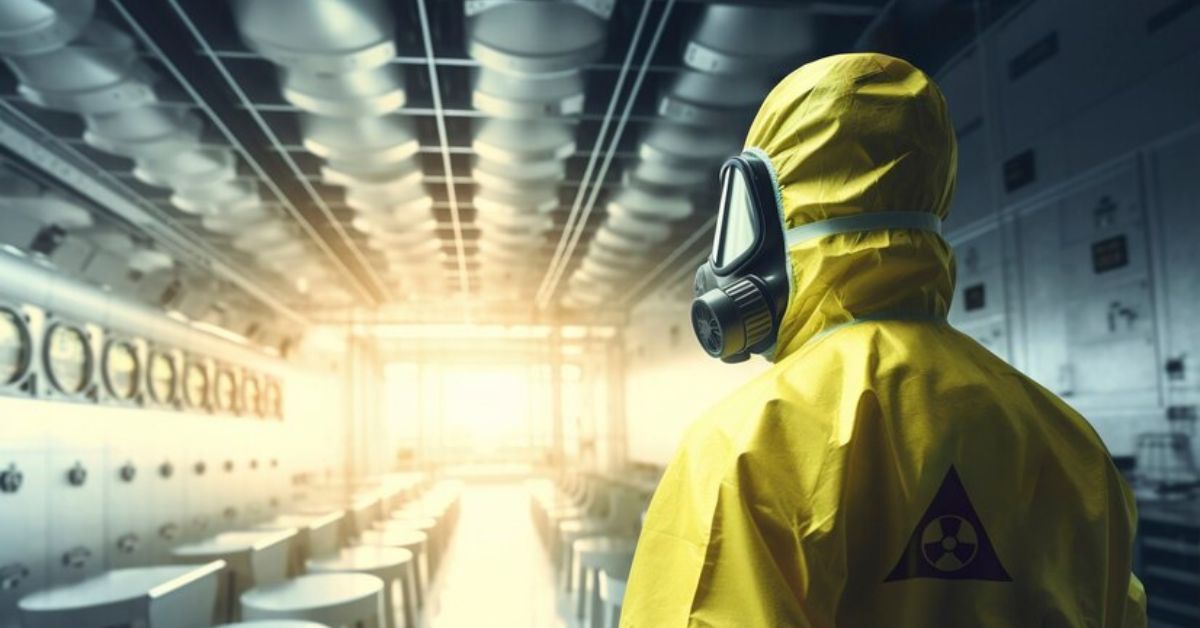Topic
Biohazard Cleanup: Ensuring Safety and Compliance

Biohazard cleanup is a critical process that involves the removal and decontamination of hazardous materials to ensure safety and compliance with health regulations. Biohazard situations can arise from various incidents, including crime scenes, accidents, chemical spills, and infectious disease outbreaks. Proper handling and disposal of biohazardous materials are essential to protect human health and the environment. This comprehensive guide provides an overview of biohazard cleanup, types of biohazard situations, health and safety protocols, and the importance of professional cleanup services.
In the event of an unforeseen biohazard incident, having access to a reliable and prompt service is essential. A 24/7 Emergency Restoration St. George team ensures that all biohazard situations are addressed swiftly, providing peace of mind and comprehensive cleanup services around the clock.
Types of Biohazard Situations
Biohazardous materials can pose significant risks if not handled correctly. Various situations can create biohazard conditions, requiring specialized cleanup procedures. Here are some common types of biohazard scenarios:
1. Crime Scenes and Trauma
Crime scenes and trauma incidents, such as homicides, suicides, and accidents, often involve blood, bodily fluids, and other biological materials. These materials can carry pathogens that pose health risks to anyone who comes into contact with them.
2. Hoarding Situations
Hoarding can create environments filled with hazardous materials, including mold, bacteria, and decaying organic matter. The accumulation of items and waste can lead to infestations of rodents and insects, further complicating the cleanup process.
3. Chemical Spills
Chemical spills, whether industrial or residential, can involve hazardous substances that are toxic, corrosive, or flammable. Proper containment and neutralization are necessary to prevent environmental contamination and health risks.
4. Infectious Disease Outbreaks
Outbreaks of infectious diseases, such as COVID-19, Ebola, and hepatitis, require thorough decontamination to prevent the spread of pathogens. Cleanup involves disinfecting surfaces, equipment, and air systems to eliminate the risk of transmission.
5. Sewage Backups
Sewage backups can introduce harmful bacteria, viruses, and parasites into the environment. These pathogens can cause severe illnesses if not properly managed and cleaned up.
6. Animal Infestations
Animal infestations, including rodents, birds, and insects, can create biohazard conditions through droppings, urine, and carcasses. These materials can carry diseases and pose health risks to humans.
Health and Safety Protocols
Biohazard cleanup requires strict adherence to health and safety protocols to protect workers and the public. The following steps outline the essential protocols involved in biohazard cleanup:
Personal Protective Equipment (PPE)
Workers must wear appropriate PPE to protect themselves from exposure to hazardous materials. PPE typically includes:
- Gloves: To prevent direct contact with biohazardous materials.
- Masks and Respirators: To protect against inhalation of harmful particles and pathogens.
- Goggles and Face Shields: To protect the eyes and face from splashes and airborne contaminants.
- Protective Suits: To prevent contamination of clothing and skin.
Containment and Isolation
The affected area must be contained and isolated to prevent the spread of biohazardous materials. This involves:
- Setting Up Barriers: Using plastic sheeting and other materials to create physical barriers.
- Establishing Negative Pressure: Using air filtration systems to maintain negative pressure and prevent contaminants from escaping the containment area.
- Controlling Access: Limiting access to authorized personnel only.
Safe Handling and Disposal
Proper handling and disposal of biohazardous materials are crucial for safety and compliance. This includes:
- Collecting and Containing: Using appropriate containers and bags for collecting and containing biohazardous materials.
- Labeling: Clearly labeling containers with biohazard symbols and relevant information.
- Transporting: Following regulations for transporting biohazardous waste to disposal facilities.
- Disposing: Using licensed disposal facilities for the safe destruction of biohazardous materials.
Decontamination and Disinfection
Decontamination and disinfection are essential to eliminate pathogens and ensure a safe environment. This involves:
- Cleaning: Removing visible debris and organic matter from surfaces.
- Disinfecting: Using EPA-approved disinfectants to kill pathogens on surfaces.
- Testing: Conducting tests to verify the effectiveness of the decontamination process.
Training and Certification
Biohazard cleanup workers must undergo specialized training and certification to handle hazardous materials safely. Training covers:
- Hazard Recognition: Identifying different types of biohazardous materials and their risks.
- Safe Practices: Learning safe handling, containment, and disposal procedures.
- Emergency Response: Preparing for potential emergencies and knowing how to respond effectively.
Importance of Professional Cleanup Services
Engaging professional biohazard cleanup services is crucial for ensuring thorough and compliant remediation. Here are some reasons why professional services are essential:
Expertise and Experience
Professional cleanup companies have the expertise and experience to handle a wide range of biohazard situations. They understand the risks involved and know how to manage them effectively, ensuring that the cleanup process is conducted safely and efficiently.
Specialized Equipment
Biohazard cleanup requires specialized equipment and tools that professionals are equipped with. This includes air filtration systems, containment barriers, and EPA-approved disinfectants. Using the right equipment ensures that the cleanup is thorough and compliant with regulations.
Compliance with Regulations
Biohazard cleanup is subject to strict regulations and guidelines set by organizations such as OSHA, EPA, and CDC. Professional cleanup services are well-versed in these regulations and ensure that all procedures comply with legal requirements, protecting you from potential liabilities.
Health and Safety
Professional cleanup services prioritize health and safety, implementing rigorous protocols to protect workers and the public. They use appropriate PPE, follow containment procedures, and ensure proper decontamination to eliminate health risks.
Peace of Mind
Hiring professionals for biohazard cleanup provides peace of mind, knowing that the situation is being handled by experts. It allows you to focus on other important matters while ensuring that the cleanup is completed safely and thoroughly.
Steps Involved in Biohazard Cleanup
Biohazard cleanup is a multi-step process that involves assessment, containment, removal, decontamination, and restoration. Here is an overview of the typical steps involved:
1. Initial Assessment
The first step is to conduct a thorough assessment of the biohazard situation. Professionals will evaluate the extent of contamination, identify the type of biohazardous materials, and develop a cleanup plan. This assessment helps determine the necessary resources, equipment, and safety measures required.
2. Containment and Isolation
To prevent the spread of contaminants, the affected area is contained and isolated. This involves setting up physical barriers, establishing negative pressure, and controlling access to the area. Containment ensures that biohazardous materials are confined to a specific area, reducing the risk of exposure.
3. Removal of Biohazardous Materials
Biohazardous materials are safely removed from the affected area. This includes collecting and containing blood, bodily fluids, chemicals, and other hazardous substances. Proper handling and disposal procedures are followed to ensure compliance with regulations and prevent environmental contamination.
4. Decontamination and Disinfection
The affected area is thoroughly cleaned and disinfected to eliminate pathogens and contaminants. Specialized cleaning agents and techniques are used to ensure that all surfaces, equipment, and air systems are decontaminated. This step is crucial for restoring a safe and healthy environment.
5. Final Inspection and Testing
After decontamination, a final inspection and testing are conducted to verify the effectiveness of the cleanup process. Professionals use testing methods to ensure that all biohazardous materials have been removed and that the area is free from contaminants.
6. Restoration
The final step involves restoring the affected area to its pre-contamination condition. This may include repairing or replacing damaged structures, repainting, and reinstalling fixtures. The goal is to return the property to a safe and habitable state.
Legal and Regulatory Considerations
Biohazard cleanup is subject to various legal and regulatory considerations to ensure safety and compliance. Here are some key regulations and guidelines:
Occupational Safety and Health Administration (OSHA)
OSHA sets standards for worker safety in biohazard cleanup situations. This includes guidelines for PPE, training, and safe handling procedures. Employers must comply with OSHA regulations to protect workers from exposure to hazardous materials.
Environmental Protection Agency (EPA)
The EPA regulates the disposal of biohazardous waste to prevent environmental contamination. This includes guidelines for the collection, transportation, and disposal of hazardous materials. Compliance with EPA regulations ensures that biohazardous waste is managed safely and responsibly.
Centers for Disease Control and Prevention (CDC)
The CDC provides guidelines for the prevention and control of infectious diseases. This includes recommendations for decontamination and disinfection procedures to eliminate pathogens. Following CDC guidelines helps prevent the spread of infectious diseases in biohazard cleanup situations.
Local and State Regulations
Local and state regulations may also apply to biohazard cleanup. These regulations can vary depending on the type of biohazard situation and the specific requirements of the jurisdiction. It’s important to be aware of and comply with all applicable local and state regulations.
Conclusion
Biohazard cleanup is a critical process that ensures the safety and health of individuals and the environment. Understanding the types of biohazard situations, health and safety protocols, and the importance of professional cleanup services is essential for effective remediation. By adhering to strict guidelines and engaging professional services, you can ensure thorough and compliant biohazard cleanup, protecting yourself, your property, and the public. Whether dealing with crime scenes, chemical spills, or infectious disease outbreaks, proper biohazard cleanup is vital for maintaining a safe and healthy environment.
Topic
Dealing with a Persistent Pest Issue? Here’s What You Need to Do

There is only one thing worse than discovering a pest infestation in your home, and that’s discovering that the pest Pest Issue infestation is still there after you have already taken pest control measures.
By their nature, pests are resilient. If they found a good breeding ground in your home, they will come back, especially if the pest control method you used to get rid of them wasn’t thorough enough.
That doesn’t mean you have to despair. If you have a recurring pest infestation, here are a few important steps you can take to make your property critter-free once and for all.
Hire a Professional Exterminator

If you’ve been trying to manage your pest issues on your own, it’s time to hire a professional exterminator. For persistent pest infestations, DIY solutions or products that you can buy at the local hardware store usually aren’t strong enough to make a difference.
Look for exterminators that are proven to provide lasting solutions to pest control issues. The team at North Fulton Pest Solutions, for instance, has been serving the Atlanta area for more than 50 years, which means they have plenty of experience with all kinds of infestations. Look for positive reviews or ask your neighbors for recommendations.
For persistent pest infestations, you may need multiple visits from an exterminator. Talk with the professionals you hire and make sure that they are transparent about their plans and how much it will cost.
Get Rid of Their Habitats

When pests keep coming back to a home, usually it’s because they found something there that they like. Go through your home and property to find potential habitats and sources of food that may be attracting pests. A professional exterminator can also help you analyze your property to find potential pest breeding grounds.
Throw out any clutter such as old newspapers, junk, or garbage bags, especially in out-of-the-way spaces like crawlspaces and attics. Clutter provides pests with a nesting ground. It can even be a source of food.
Standing water is another attraction for pests, especially mosquitoes and other bugs. Get rid of pools or places where puddles form when it rains. Go over your plumbing to find any hidden leaks that may be attracting pests.
Make Sure They Can’t Come In
There’s no point in making your home unwelcoming to pests if you’re unwittingly inviting them in. Go over your home and identify places where pests can get inside, such as cracks, open windows, or crawlspaces.
Seal off any potential entrance points for pests. That way, once you redo your pest control treatment, they won’t be able to come back.
Finding Pest Control Solutions That Last
Persistent pest infestations are the nightmare of every homeowner, but you can manage them with the right help. Make sure that your home is inhospitable to pests by getting rid of their habitats, food sources, and points of entry. That way, you can prevent future infestations.
To get rid of persistent infestations, you need help from a professional exterminator. They can provide treatments that remove long-lasting pest colonies and advise you on ways to prevent future infestations. It may take multiple visits, but a good exterminator will help you get rid of pests once and for all.
Topic
Important Factors to Consider When Planning a Funeral for a Loved One

Planning a funeral comes with emotional weight, personal responsibilities, and a long list of practical decisions. Grief and planning often don’t blend easily, which can make this time particularly overwhelming. Whether the loss was sudden or expected, the need to prepare a respectful, meaningful service remains. Decisions made during this time can shape how friends and family experience the memorial and how they begin their healing. Thoughtful planning doesn’t eliminate sorrow, but it helps bring clarity and purpose when comfort is needed most.

Professional Funeral Services and What They Offer
Working with experienced funeral professionals can help bring structure and sensitivity to an otherwise stressful process. Many people lean on these services to manage paperwork, coordinate logistics, and create an atmosphere that feels personal yet smooth. These professionals often offer packages that include transportation, preparation of the body, coordination with cemeteries or crematoriums, and arranging for celebrants or religious leaders. Planning every detail alone may be overwhelming during a period of grief. Families often seek guidance, and working with someone who understands how to balance tradition with personal preference can be reassuring. You can also learn more here, by exploring how funeral directors help design services that feel respectful and cohesive. This way, you won’t be left to handle every detail alone.
Budget and Financial Considerations
Funeral costs can vary widely based on location, type of service, burial or cremation choices, and specific wishes. While many families would prefer not to think about expenses during a time of loss, being clear about a budget can reduce stress later on. Planning with transparency helps avoid unplanned charges and emotional overspending.
It can be useful to begin with an itemized estimate and discuss any available payment options or funeral insurance policies the deceased may have held. Community resources, religious organizations, or local governments sometimes offer assistance as well. Balancing financial realities with meaningful planning creates space for a respectful service without long-term burden.
Personal Touches and Cultural Traditions
Every funeral is different because every person is different. Incorporating personal touches, whether a favorite song, family photos, or a particular color, can bring comfort to those attending. For some families, cultural customs guide the ceremony, dictating structure, attire, music, or rituals. Honoring those traditions can offer a sense of continuity and belonging, especially across generations.
Religious and spiritual customs may influence elements like burial versus cremation, the role of clergy, or the timing of services. In other cases, personal values or preferences may shape the service more than tradition. What matters is that the farewell feels honest and fitting. When families make space for personal expression, it often becomes easier to say goodbye.
Logistics and Timing
Timing affects nearly every aspect of funeral planning. This includes not just when the service will be held, but also how long family members have to travel, when religious or cultural requirements call for burial, and how quickly arrangements can be made. Short timelines often demand rapid decisions, which can feel rushed without clear priorities.
Details like securing a venue, confirming the availability of officiants or religious leaders, and printing memorial programs all require coordination. Travel arrangements for loved ones flying in, accommodations for out-of-town guests, or special seating for elderly relatives are all elements that must be balanced in a short time frame. Planning around these needs helps the day run more smoothly and allows mourners to focus on remembering rather than managing.
Cremation vs. Burial Decisions

This decision often comes down to religious beliefs, personal preferences, or the wishes of the deceased. Burial typically involves selecting a casket, plot, and headstone, along with interment services. Cremation, on the other hand, offers more flexibility regarding location and timing. Some families choose to hold a memorial service later, when more people can attend, or to scatter ashes in a place of significance.
There are emotional and practical differences between the two options. Burial may give families a permanent place to visit, while cremation may align with a desire for a more flexible or environmentally conscious approach. Some people plan ahead and make these decisions themselves, but if not, loved ones are left to choose what feels most fitting. Regardless of the path taken, clarity and shared decision-making can reduce conflict and regret.
Communication with Family and Loved Ones
When emotions run high, misunderstandings can easily happen. Communicating openly with family members about decisions, big or small, can prevent confusion and resentment. Sometimes one person takes the lead in making arrangements, but it helps if everyone understands what to expect and has a chance to share input.
Respecting diverse opinions within a family isn’t always simple, especially under stress. But maintaining transparency about decisions, timelines, and costs helps preserve relationships during a time that can either strengthen or strain family bonds. If disagreements arise, returning to what the deceased might have wanted can offer a guiding perspective.
Planning a funeral involves many layers, from emotional care to practical coordination. The choices made during this time can support both personal healing and collective remembrance. Whether through professional guidance, budget clarity, personal expression, or respectful timing, thoughtful planning helps honor a life in a way that brings comfort to those left behind.
Topic
Key Safety Features That Help Prevent Commercial Vehicle Rear-End Crashes

Commercial vehicles have a responsibility when they’re on the road. Since they’re bigger and heavier than most other vehicles, the companies that own them need to take safety precautions to prevent crashes. Even a simple rear-end crash could have dire consequences if a commercial vehicle rather than an ordinary passenger car is involved.
Vehicle technology has evolved to prevent crashes, including rear-end crashes. The law requires companies that operate commercial vehicles to make sure that they have these features to protect the safety of everybody on the road.
Here are some key safety features that can help stop commercial vehicle rear-end crashes from happening. If you are involved in a crash and the company did not take these precautions, you have grounds for a lawsuit due to their negligence.
Driver Training
No amount of technological advances can compensate for poorly trained, exhausted drivers. Commercial vehicle companies are obligated to train and vet their drivers to make sure they are able to operate their vehicles.
Drivers need to know what to do to prevent crashes on crowded routes with vehicles that have slower response times when stopping. In many cases where there is an accident with a commercial vehicle, the driver is at fault. However, their employer often shares the responsibility for not training them adequately or for putting them on schedules that make rested response times impossible.
Driver training combined with new vehicle technology can help prevent rear-end crashes and make the road safer for commercial and personal vehicles.
Forward Collision Warning
Forward collision warning systems are a new form of technology that is revolutionizing road safety. Initial studies found that cars and trucks with FCW and other emergency measures (more on those later) were nearly 50% less likely to be involved in rear-end crashes.
A forward collision warning system (FCW) detects objects, including other vehicles, in front of the truck. It uses a complex combination of radar sensors and cameras routed through a central control unit to do so. When the system calculates that your vehicle is too close to something in front of you, it will send you an alert.
The FCW adjusts its alerts according to the speed, size, and response time of the vehicle you are driving. This helps reduce commercial vehicle rear-end crashes caused by misjudging the power and inertia of the vehicle, which is usually larger than a passenger car.
The alert system also reduces distracted driving. If a second of inattention looks like it will result in a crash, the system alert jolts the driver into action.
Lane Departure Warning Systems
Modern vehicles have multiple systems monitoring potential crashes depending on the potential danger. Another important warning system is the lane departure warning, which sends the driver an alert if they are drifting out of their lane without signs that they are intentionally switching lanes.
Lane departure warning systems are most effective at stopping roadside crashes or side-on crashes. They also help reduce the rate of rear-end crashes because they stop a driver from accidentally rear-ending a car in the lane next to them.
Drivers keep enough distance between themselves and the vehicle ahead of them in their own lane, but may not be paying attention to what’s going on in the lane next to them until it’s too late.
Advanced Emergency Braking Systems
Besides advances in the detection of potential crashes, vehicle technology has also developed better response protocols to help prevent crashes. One of the most important developments, particularly for commercial fleets, is Advanced Emergency Braking Systems (AEBS).
AEBS usually works with crash detection technology to activate the brakes if the vehicle detects that a crash is likely. If the driver doesn’t respond in time, the vehicle activates the emergency braking system to avoid a crash.
AEBS are important on commercial vehicles because they usually take longer to stop due to their bulk. Drivers may misjudge the amount of time it will take them to stop their truck, leading to an accident. An automated emergency braking system reduces the risk of human error.
Even if a truck is unable to stop completely, an emergency braking system can help it slow down enough to prevent severe injuries from a crash. Reducing the impact of rear-end crashes is just as important as preventing them.
Preventing Rear-End Crashes with Commercial Vehicles
Thanks to advances in technology, commercial vehicle rear-end crashes have decreased. Forward Collision Warning systems, lane departure warning systems, and Advanced Emergency Braking Systems are just some of the developments that reduce the risk of human error causing accidents.
If a company fails to update its fleet to have the latest safety precautions, it could be liable for any accidents that its trucks cause. Commercial fleets owe it to other drivers to have the latest in safety technology.

 Cartoon1 year ago
Cartoon1 year agoUnlocking the Potential of Nekopoi.care: A Comprehensive Guide

 Game1 year ago
Game1 year agoExploring Aopickleballthietke.com: Your Ultimate Pickleball Destination

 BUSINESS1 year ago
BUSINESS1 year agoWhat Companies Are In The Consumer Services Field

 BUSINESS1 year ago
BUSINESS1 year agoUnraveling the Mystery of 405 Howard Street San Francisco charge on Credit Card

 HOME IMPROVEMENT1 year ago
HOME IMPROVEMENT1 year agoVtrahe vs. Other Platforms: Which One Reigns Supreme?

 TECHNOLOGY1 year ago
TECHNOLOGY1 year agoThe Guide to Using Anon Vault for Secure Data Storage

 ENTERTAINMENT11 months ago
ENTERTAINMENT11 months agoUnderstanding Bunkr Album: A Comprehensive Guide

 ENTERTAINMENT1 year ago
ENTERTAINMENT1 year agoThe Epic Return: Revenge of the Iron-Blooded Sword Hound
















